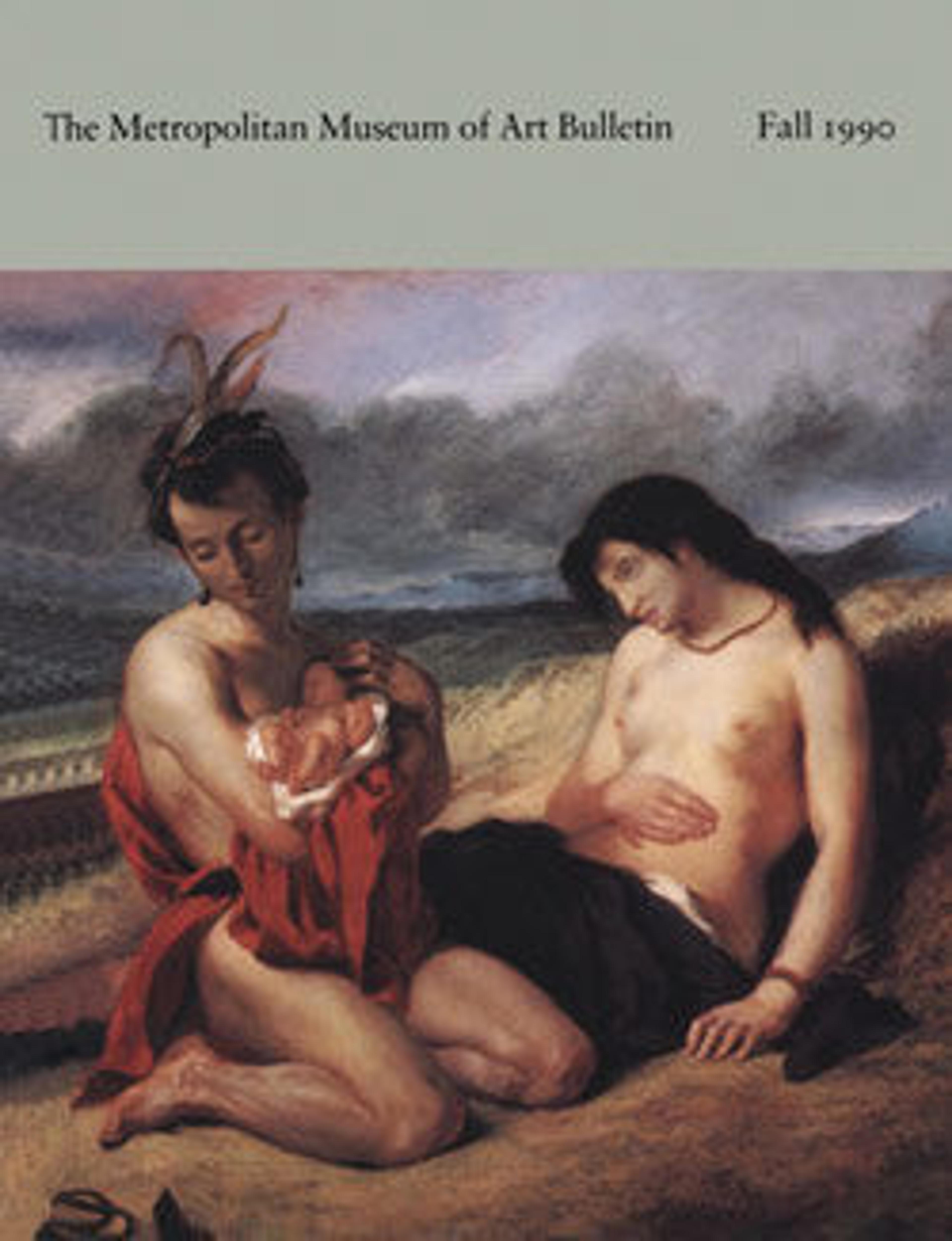Wine cooler (seau à demi-bouteille) (one of a pair)
In 1745 the company of shareholders in the Vincennes factory was granted a privilege by Louis XV for the exclusive production in France of porcelain "in the manner of Saxony, painted and gilded, with human figures." It is thus not surprising to encounter Meissen influence in both the forms and decorations of early Vincennes pieces. A well-established Meissen formula of the 1730s and early 1740s was the gold-banded cartouche enclosing a pictorial subject; at Vincennes this was adopted about 1749–52 for use mainly on coolers for wine bottles and glasses, which were painted with landscapes incorporating figures or humble cottages in the Dutch manner.
By about 1752, however, the presence at Vincennes of the model designer Jean-Claude Duplessis and the painter Francois Boucher was leading the factory in a new direction, and the bottle cooler and its mate mark the transition. On both sides of each are pastoral landscapes, in soft blues, greens, and browns, that rest lightly and freely on the clear white ground, unconstrained by a border. These idyllic scenes are quite unlike the cottage landscapes, which, though charming, have a slightly stiff and borrowed air about them. Here, emerging with grace and complete maturity of style, is the Vincennes of Madame de Pompadour and the French Rococo.
By about 1752, however, the presence at Vincennes of the model designer Jean-Claude Duplessis and the painter Francois Boucher was leading the factory in a new direction, and the bottle cooler and its mate mark the transition. On both sides of each are pastoral landscapes, in soft blues, greens, and browns, that rest lightly and freely on the clear white ground, unconstrained by a border. These idyllic scenes are quite unlike the cottage landscapes, which, though charming, have a slightly stiff and borrowed air about them. Here, emerging with grace and complete maturity of style, is the Vincennes of Madame de Pompadour and the French Rococo.
Artwork Details
- Title:Wine cooler (seau à demi-bouteille) (one of a pair)
- Manufactory:Vincennes Manufactory (French, ca. 1740–1756)
- Date:ca. 1751–52
- Culture:French, Vincennes
- Medium:Soft-paste porcelain
- Dimensions:5 1/16 × 6 3/8 in. (12.9 × 16.2 cm)
- Classification:Ceramics-Porcelain
- Credit Line:Purchase, Gift in memory of Frederick P. Victoria, 1989
- Object Number:1989.351.1
- Curatorial Department: European Sculpture and Decorative Arts
More Artwork
Research Resources
The Met provides unparalleled resources for research and welcomes an international community of students and scholars. The Met's Open Access API is where creators and researchers can connect to the The Met collection. Open Access data and public domain images are available for unrestricted commercial and noncommercial use without permission or fee.
To request images under copyright and other restrictions, please use this Image Request form.
Feedback
We continue to research and examine historical and cultural context for objects in The Met collection. If you have comments or questions about this object record, please contact us using the form below. The Museum looks forward to receiving your comments.
